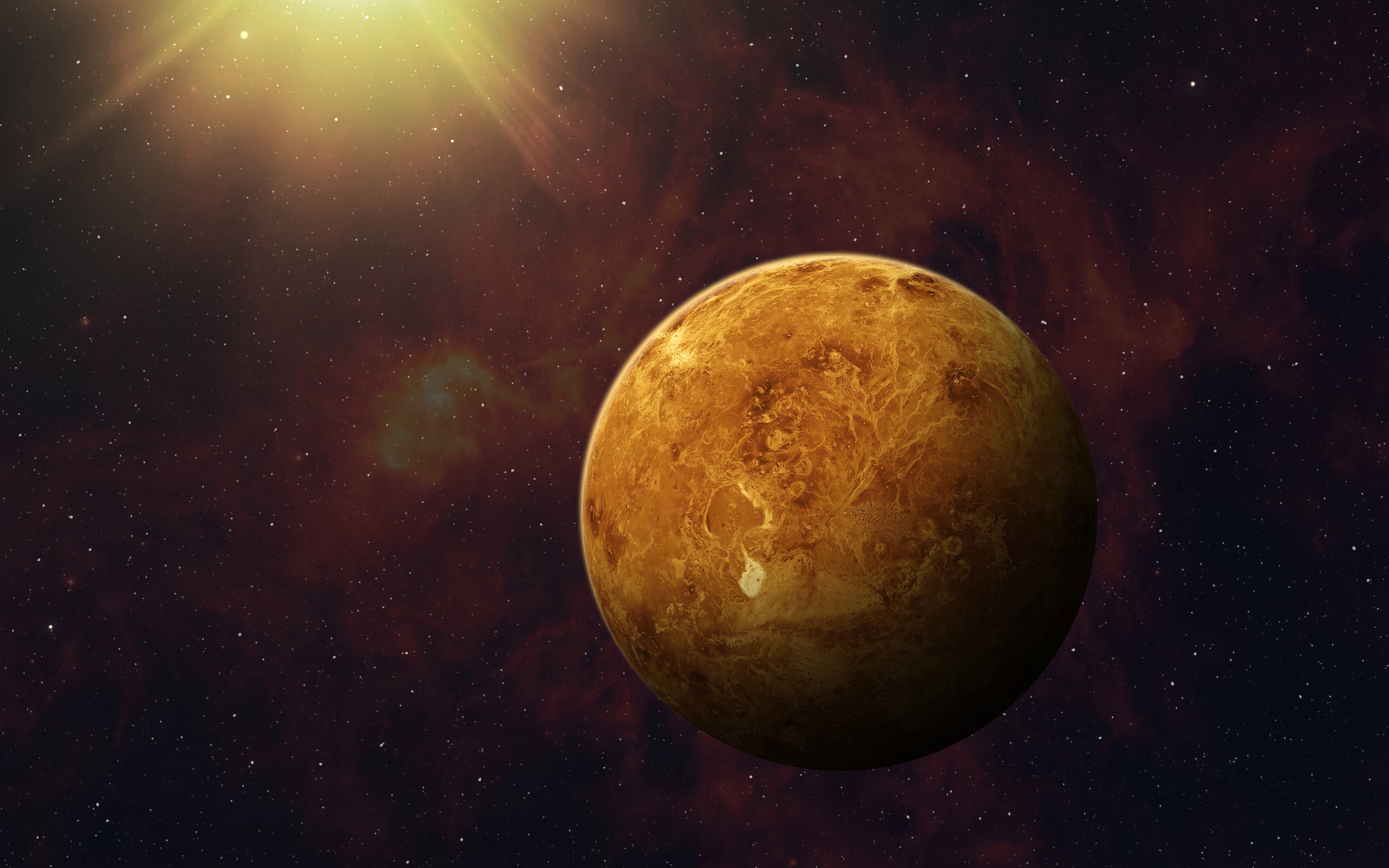Nasa to launch two breakthrough Venus missions in hope of finding out whether it was habitable like Earth – and how it became a hellhole

Your support helps us to tell the story
From reproductive rights to climate change to Big Tech, The Independent is on the ground when the story is developing. Whether it's investigating the financials of Elon Musk's pro-Trump PAC or producing our latest documentary, 'The A Word', which shines a light on the American women fighting for reproductive rights, we know how important it is to parse out the facts from the messaging.
At such a critical moment in US history, we need reporters on the ground. Your donation allows us to keep sending journalists to speak to both sides of the story.
The Independent is trusted by Americans across the entire political spectrum. And unlike many other quality news outlets, we choose not to lock Americans out of our reporting and analysis with paywalls. We believe quality journalism should be available to everyone, paid for by those who can afford it.
Your support makes all the difference.Nasa says it will launch two missions to Venus in the hope of understanding more about the hellish world.
Once, our nearest planetary neighbour is thought to have been fairly pleasant, and potentially even habitable for alien life. It has many characteristics similar to the Earth, and might once have had oceans and an atmosphere like our own.
But now it is a world that is most often likened to hell. It is blazingly hot, with clouds of sulphuric acid.
For a long time, the planet has been seen to be somewhat neglected by the public and by scientists, who have focused on more famous and better-studied worlds such as Mars. But Venus shot back into public view last year, when scientists revealed they had found signals that might suggest there is alien life living on the planet right now.
The planet will get even more focus after two missions to visit it were selected by Nasa as part of its Discovery competition. The two missions – named Davinci+ and Veritas – were selected from a shortlist of four, chosen by a competitive and peer reviewed process and on the basis of their “potential scientific value and the feasibility of their development plans”, Nasa said.
They will each be awarded around $500 million and are expected to launch around 2028-2030.
Davinci+ stands for Deep Atmosphere Venus Investigation of Noble gases, Chemistry, and Imaging and will aim to measure the atmosphere on Venus, with a view to understanding how it formed and then evolved. That research could also reveal whether the planet had its own ocean.
It will be made up of a sphere that will descend through the planet’s thick atmosphere, taking measurements as it falls in an attempt to understand how the atmosphere became the thick, infernal hothouse that it is today.
It will also send back the first high-resolution pictures of the “tesserae” on the planet, which are unique features that could be similar to the continents on Earth. It will be the first US mission to study the atmosphere in 40 years by the time it is launched.
Veritas stands for Venus Emissivity, Radio Science, InSAR, Topography, and Spectroscopy and will look at the planet itself. The data it sends back will be used for research that will look to establish how its history ran and why it developed so differently from Earth.
It will look to gather information on the patterns of its surface, building up a 3D map of its topography and gathering information to understand whether it could have plate tectonics and volcanoes.
It will also look to understand the type of rocks that madke up the planet, and whether water vapour is being pushed out into the atmosphere by active volcanoes.
“We’re revving up our planetary science program with intense exploration of a world that NASA hasn’t visited in over 30 years,” said Thomas Zurbuchen, NASA’s associate administrator for science, in a statement.
“Using cutting-edge technologies that NASA has developed and refined over many years of missions and technology programs, we’re ushering in a new decade of Venus to understand how an Earth-like planet can become a hothouse.
Our goals are profound. It is not just understanding the evolution of planets and habitability in our own solar system, but extending beyond these boundaries to exoplanets, an exciting and emerging area of research for Nasa.”
The space agency said that it will be like looking at the planet all over again.
“It is astounding how little we know about Venus, but the combined results of these missions will tell us about the planet from the clouds in its sky through the volcanoes on its surface all the way down to its very core,” said Tom Wagner, NASA’s Discovery Program scientist. “It will be as if we have rediscovered the planet.”
Two “technology demonstrations” will fly alongside the main missions. Veritas will carry an atomic clock that will test equipment that could be used to allow spacecraft to maneuver themselves autonomously and do better radio science; Davinci+ will have a spectrometer that will be used in an attempt to identify something in Venus’s atmosphere that absorbs as much as half the solar energy that hits it.
Join our commenting forum
Join thought-provoking conversations, follow other Independent readers and see their replies
Comments